A key element of the Vincent van Gogh legend is that he was ignored during his lifetime and never sold his work. Although largely true, during the artist’s period in France he gradually began to win recognition. And a year after his suicide, sales began, slowly at first.
We track down the first 12 paintings that are known to have been sold up until the year after Van Gogh’s death. This reveals what sort of collectors made the audacious decision to buy, the prices they paid—and which pictures they chose.
The Red Vineyard
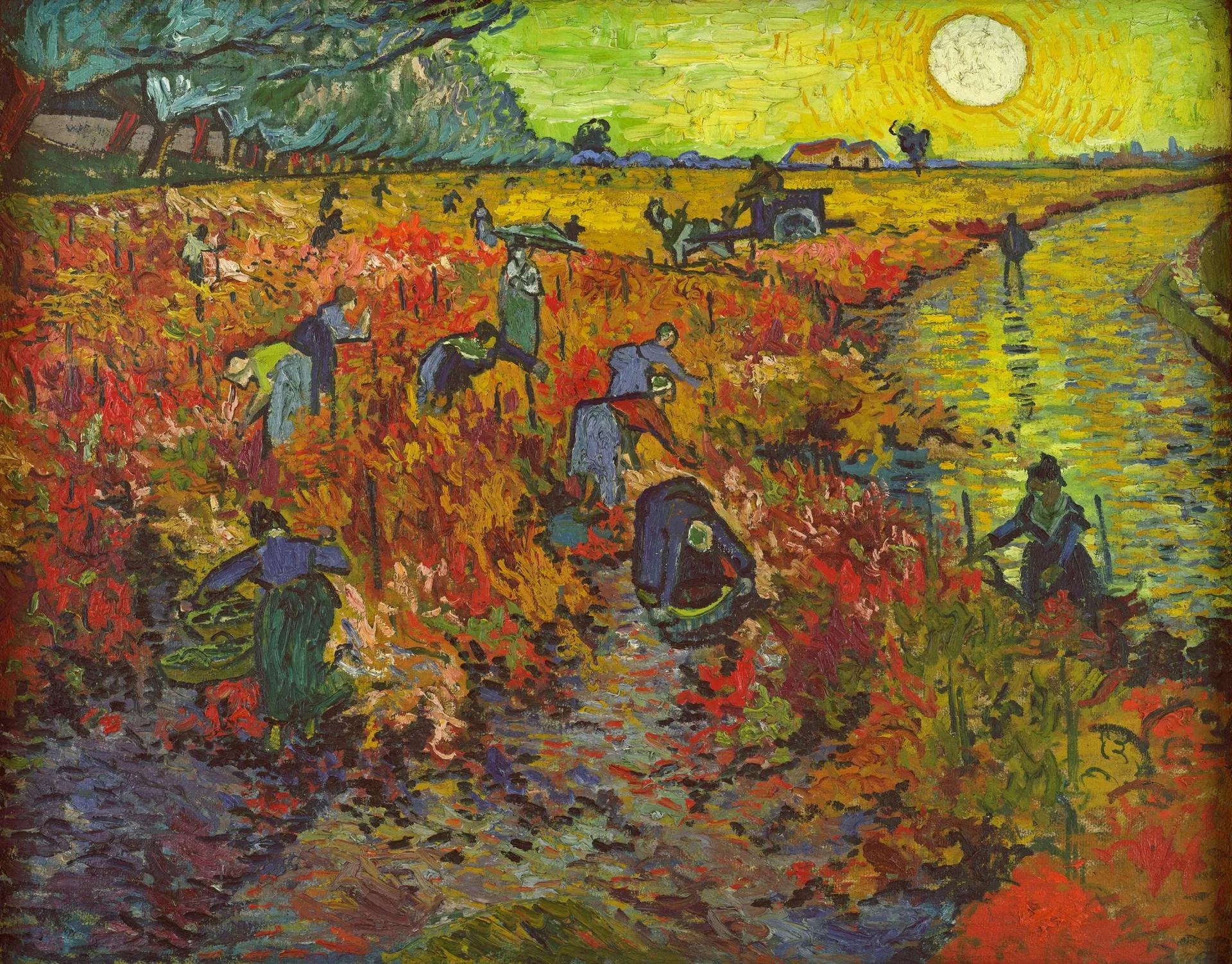
Van Gogh’s The Red Vineyard (November 1888) Credit: Pushkin Museum, Moscow
The Red Vineyard (November 1888) is now famed as the only painting that Van Gogh is certain to have sold in his lifetime. It was shown in an exhibition in Brussels in March 1890, four months before the artist’s demise. Going for 400 francs (then £16), it was bought by Anna Boch, a Belgian avant-garde painter. She sold The Red Vineyard in around 1907 and it is now at Moscow’s Pushkin Museum.
Three Sunflowers

Van Gogh’s Three Sunflowers (August 1888) Private collection
It may come as no surprise that the first sale after Van Gogh’s death included Three Sunflowers (August 1888). This was the first of four still lifes of sunflowers that he painted in the Yellow House in Arles. Sold in April 1891, the buyer was the French critic Octave Mirbeau, who had just published a glowing review of Van Gogh’s work.
A well as Three Sunflowers, Mirbeau also bought Irises from Père Julien Tanguy, a paint seller who was close to the Parisian avant-garde artists —and sometimes sold their work. Tanguy arranged Van Gogh sales on behalf of Jo Bonger, the widow of Vincent’s brother Theo, who had inherited the family collection.
The price for the two flower paintings was 600 francs. Mirbeau tried to hide the purchase from his wife, who would have been angry if she had discovered that he was spending money on this sort of art. Deceiving his wife, he asked for a note saying that the two pictures were a gift, not a purchase.
Mirbeau kept Three Sunflowers until 1912, by which time its value had rocketed to 50,000 francs, a spectacular growth from the 300 francs he had paid. Since then the painting has always been hidden away in private collections and was last exhibited briefly in Cleveland in 1948.
Irises

Van Gogh’s Irises (May 1889) © J. Paul Getty Museum, Los Angeles
Mirbeau’s other purchase, Irises (May 1889), was the first picture that Van Gogh painted just after his arrival at the asylum at Saint-Rémy-de-Provence. It is an amazingly optimistic picture, produced in the most challenging of circumstances.
Claude Monet was a friend of Mirbeau, visiting him shortly after his purchase of the Van Goghs. On seeing Three Sunflowers and Irises, Monet exclaimed: “How could a man who has loved flowers and light so much and has rendered them so well, how could he have managed to be so unhappy?”
The choice of the two Van Goghs, which he hung in his dining room, came as no surprise to those who knew Mirbeau. As Léon Daudet, a writer friend, explained: “Mirbeau has two points of refuge, namely, his love of flowers and of paintings. So far as they are concerned his taste is excellent, almost infallible… His eye… is 15 years ahead of his day.”
Mirbeau sold Irises in 1905 and, after passing through various collections, it was bought by the J. Paul Getty Museum in Los Angeles in 1990, for around $50m.
Peach Trees in Blossom
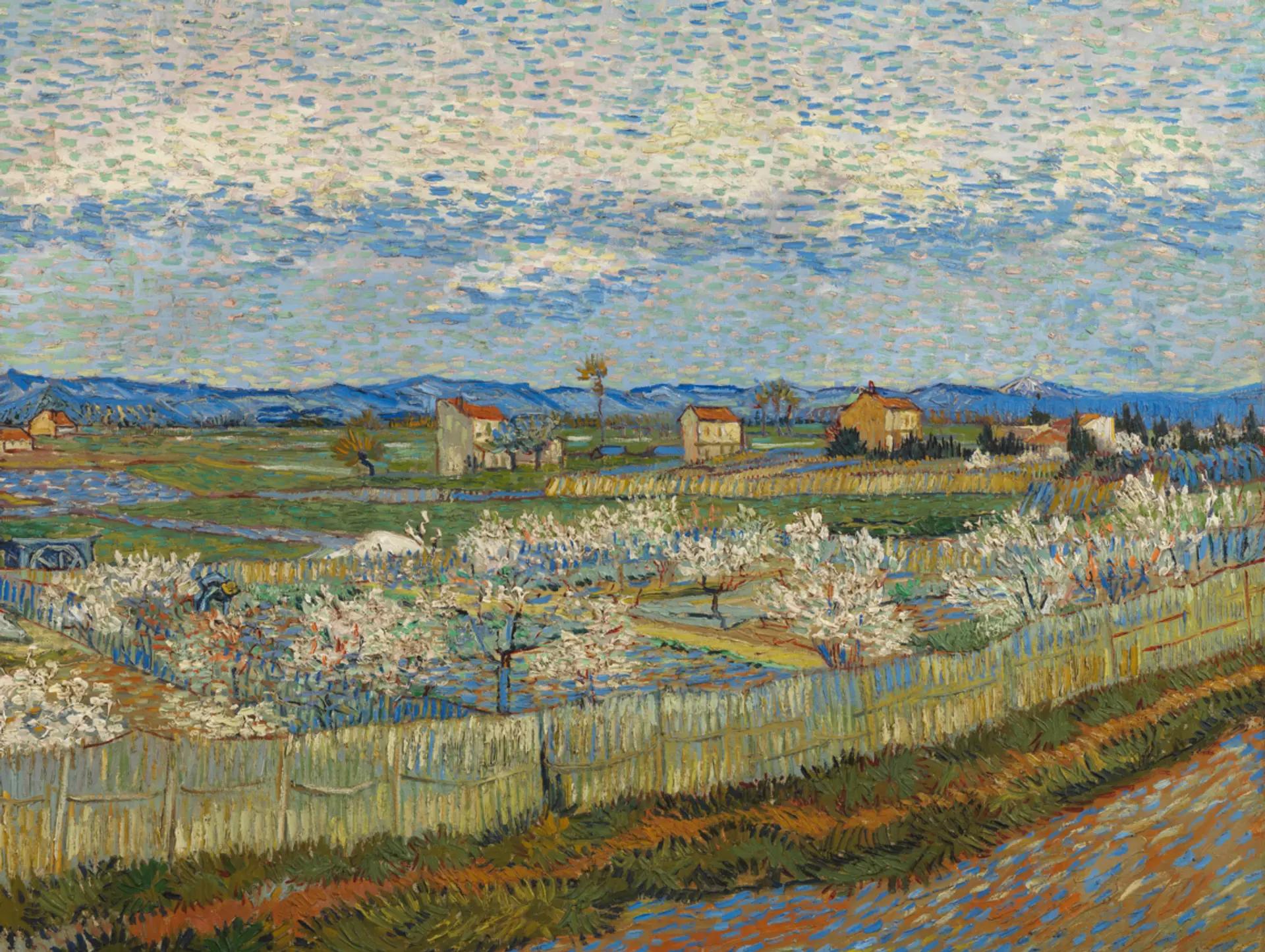
Van Gogh’s Peach Trees in Blossom (April 1889) © Samuel Courtauld Trust, Courtauld Gallery, London
In June 1891 Anna Boch, who had earlier acquired The Red Vineyard, added to her collection, buying Peach Trees in Blossom (April 1889) for 350 francs. Vincent had given a brief description of the painting to his artist friend Paul Signac: “Green countryside with little cottages, blue line of the Alpilles, white and blue sky. The foreground, enclosures with reed hedges where little peach trees are in blossom”.
Boch sold her two Van Goghs in 1906 for 10,000 francs, a good return on the 750 francs she had paid. Peach Trees in Blossom is now at London’s Courtauld Gallery.
Vase with Pink Roses
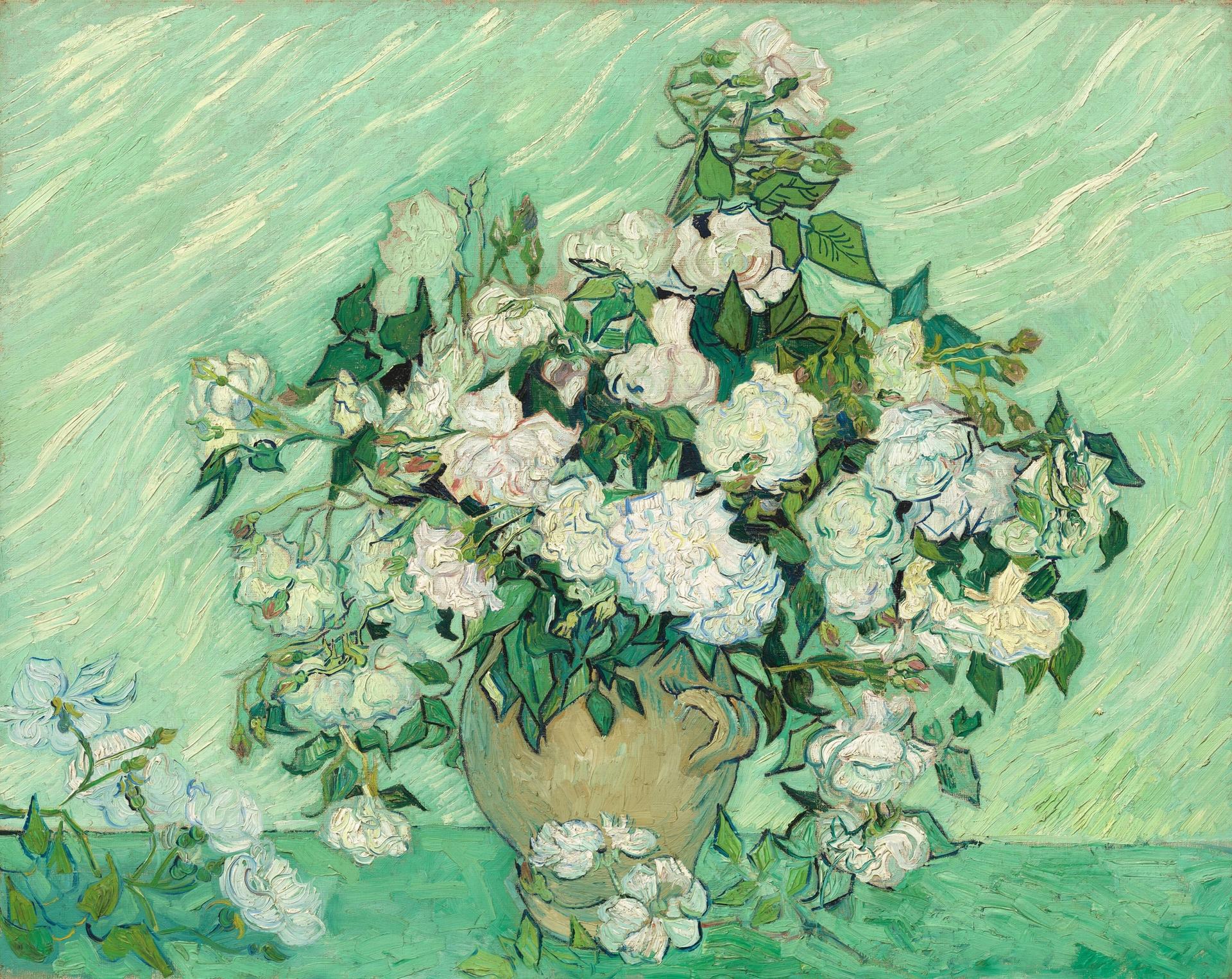
Van Gogh’s Vase with Pink Roses (May 1890) Credit: National Gallery of Art, Washington, DC
Vase with Pink Roses (May 1890) was painted just a few days before Van Gogh left the asylum (the pink pigment has faded and is now nearly white). In June 1891 it was bought for 400 francs by Paul Gallimard, a Parisian who owned a major collection of Impressionist works. He sold the Van Gogh in the early 1900s and it is now at the National Gallery of Art in Washington, DC.
The Sower
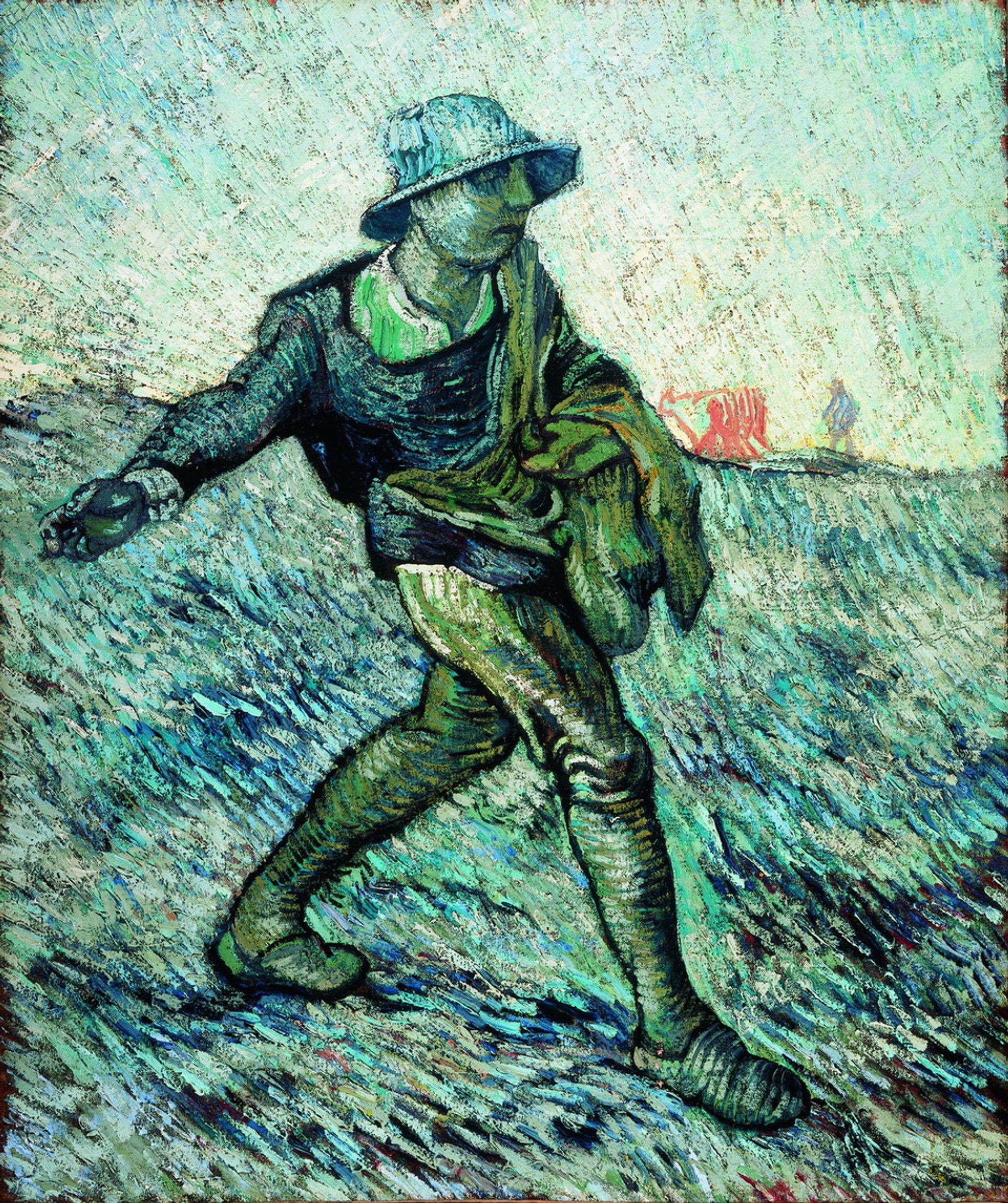
Van Gogh’s The Sower (after Jean-François Millet) (November 1889 or January 1890) Credit: Kröller-Müller Museum, Otterlo
The Sower (November 1889 or January 1890) is Van Gogh’s own painted version in colour of a black-and-white print by Jean-François Millet. This was an image that had inspired him for a decade, ever since he had set out to become an artist. Van Gogh’s version was sold for 400 francs to an unknown buyer in September 1891.
White Cottages at Saintes-Maries
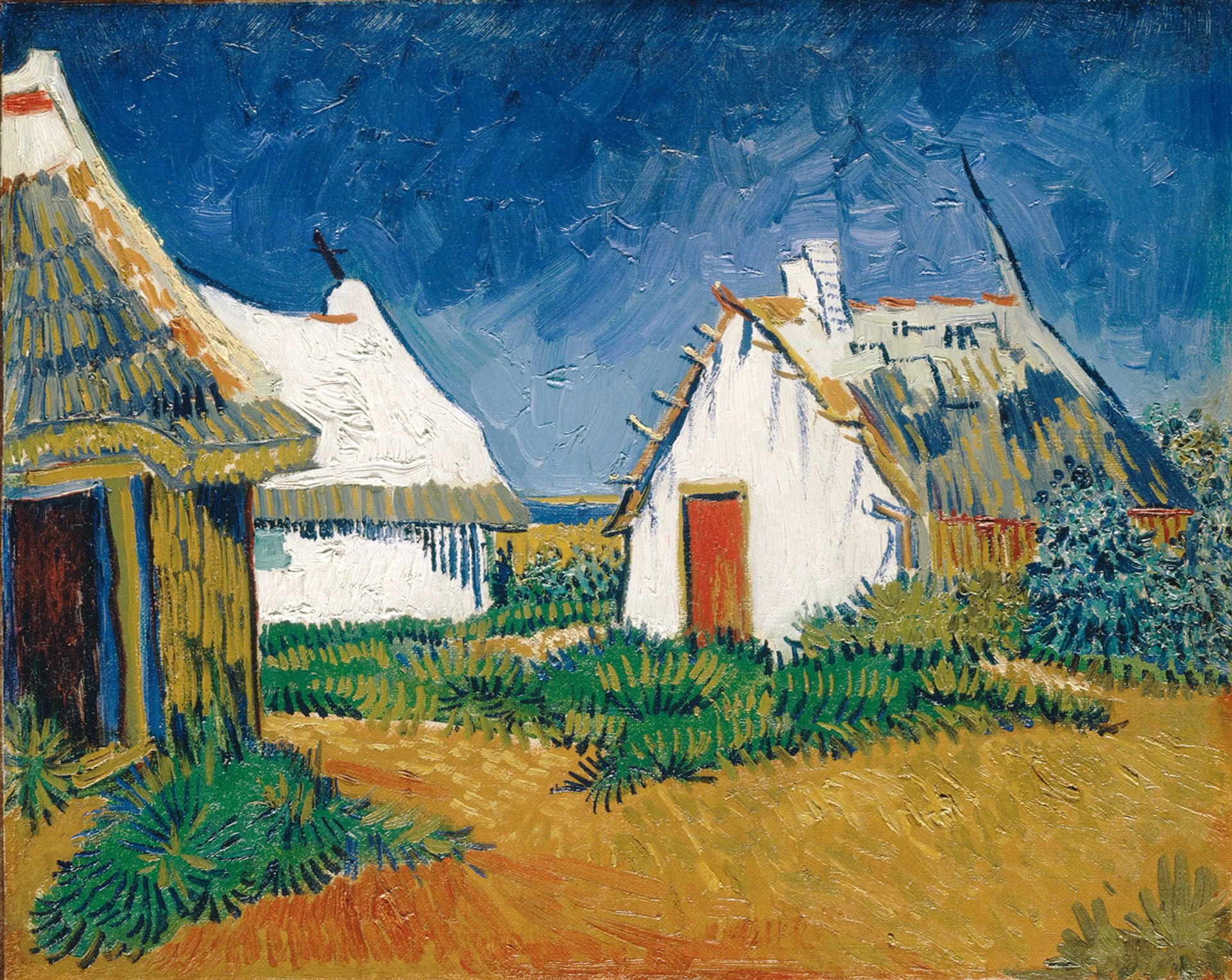
Van Gogh’s White Cottages at Saintes-Maries (June 1888) Credit: Kunsthaus, Zurich (donated by Walter Haefner, 1995)
In November 1891 the first buyer of a group of Van Gogh paintings appeared: Willy Gretor, the pseudonym of a most eccentric character, Wilhelm Peterson. He was a Prussian-born art lover and artist who had just arrived in Paris. It remains unclear whether he acquired his Van Goghs as a collector or for resale, but the fact that he bought no fewer than six suggests that he spotted their commercial potential. Gretor paid 2,200 francs for the group.
White Cottages at Saintes-Maries (June 1888) depicts a view of the fishing village which Van Gogh visited for just under a week, travelling from Arles. Inspired by his first view of the Mediterranean, he was then at the height of his powers as a colourist.
Farmhouse in Provence

Van Gogh’s Farmhouse in Provence (June 1888) Credit: National Gallery of Art, Washington, DC
Farmhouse in Provence (June 1888), along with the next four works, was also bought by Gretor. It depicts a setting on the outskirts of Arles. At the time Vincent described the composition to his sister Wil as a summer scene, set under a blue sky: “A landscape takes on tones of gold of every shade, green-gold, yellow-gold, red-gold, ditto bronze, copper, in short from lemon yellow to the dull yellow colour of, say, a pile of threshed grain.”
Harvest in Provence

Van Gogh’s Harvest in Provence (June 1888) Credit: Israel Museum, Jerusalem
Harvest in Provence (June 1888) was painted just a few days after Farmhouse in Provence, with even more powerful blues. On 21 June 1888 Vincent wrote to Theo: “I’ve had a week of concentrated hard work in the wheatfields right out in the sun.”
Barges
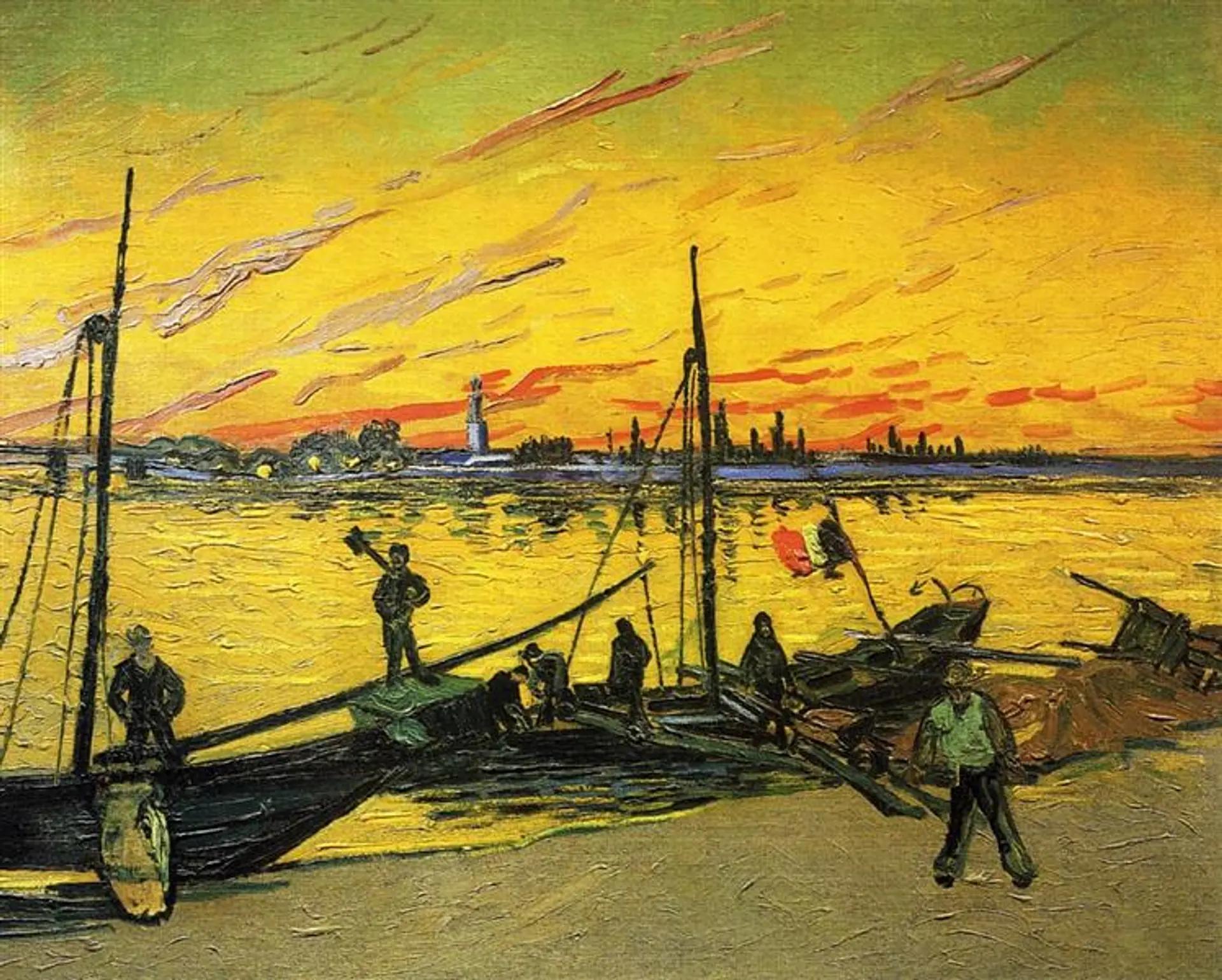
Van Gogh’s Barges (Stevedores) (August-October 1888) Credit: private collection
Barges (August-October 1888) represents an evening scene on the River Rhône at Arles, just five minutes' walk from the Yellow House. Under a blazing sunset, stevedores rush to complete their task of unloading sand on the quay.
Prison Courtyard
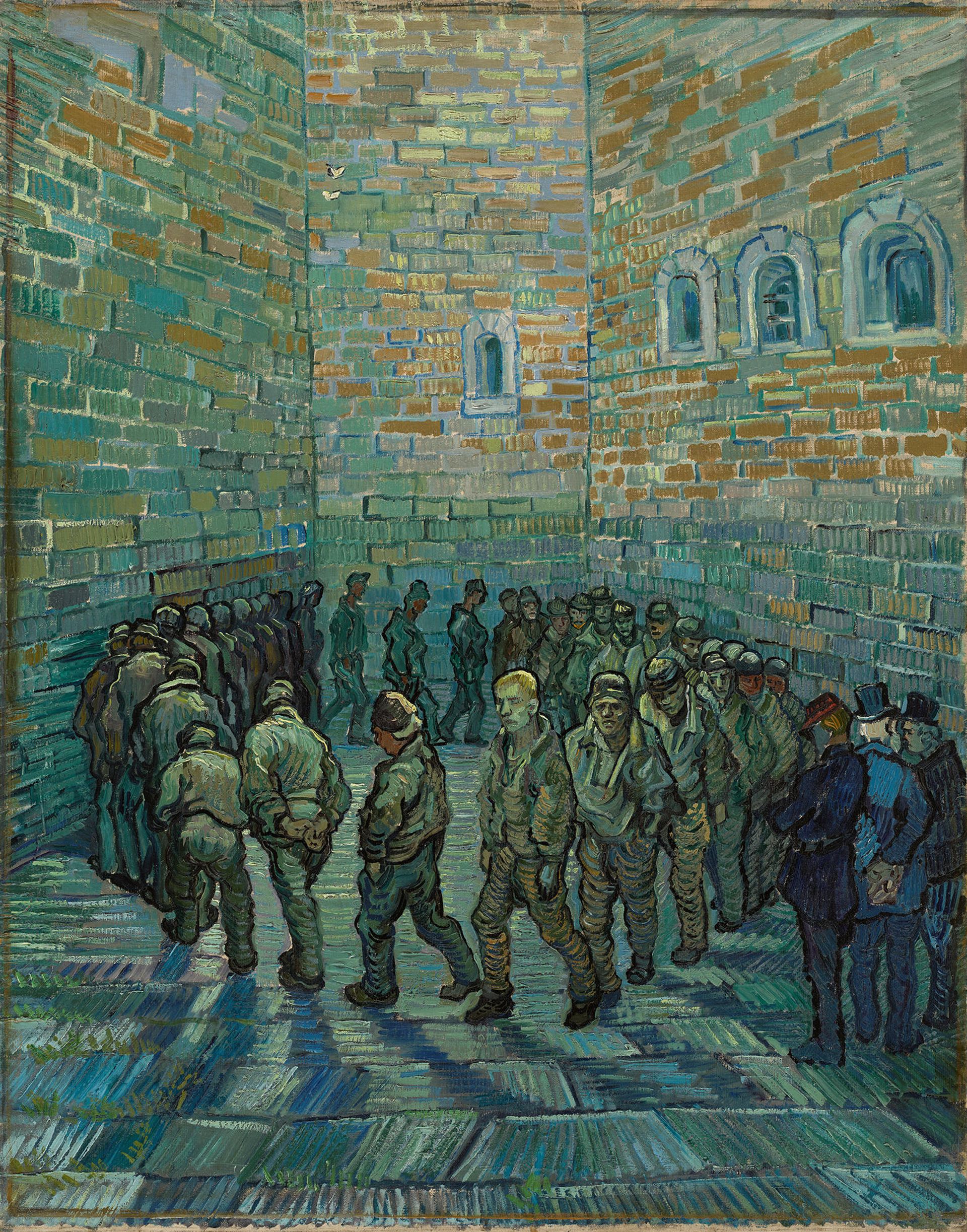
Van Gogh’s Prison Courtyard (after Gustave Doré) (February 1890) Credit: Pushkin Museum, Moscow
The two final Gretor paintings were both painted versions of prints by two artists who Van Gogh greatly admired. As Vincent explained to Theo: “It’s not copying pure and simple… It is rather translating into another language, the one of colours.”
Prison Courtyard (February 1890) is a coloured version of a smaller black-and-white print by Gustave Doré, which had originally been published in the book London: A Pilgrimage. The individual print which Van Gogh chose to reinterpret in colour was Newgate—Exercise Yard. It is no coincidence that it is a prison scene, painted by Van Gogh when he was confined in the asylum.
Good Samaritan
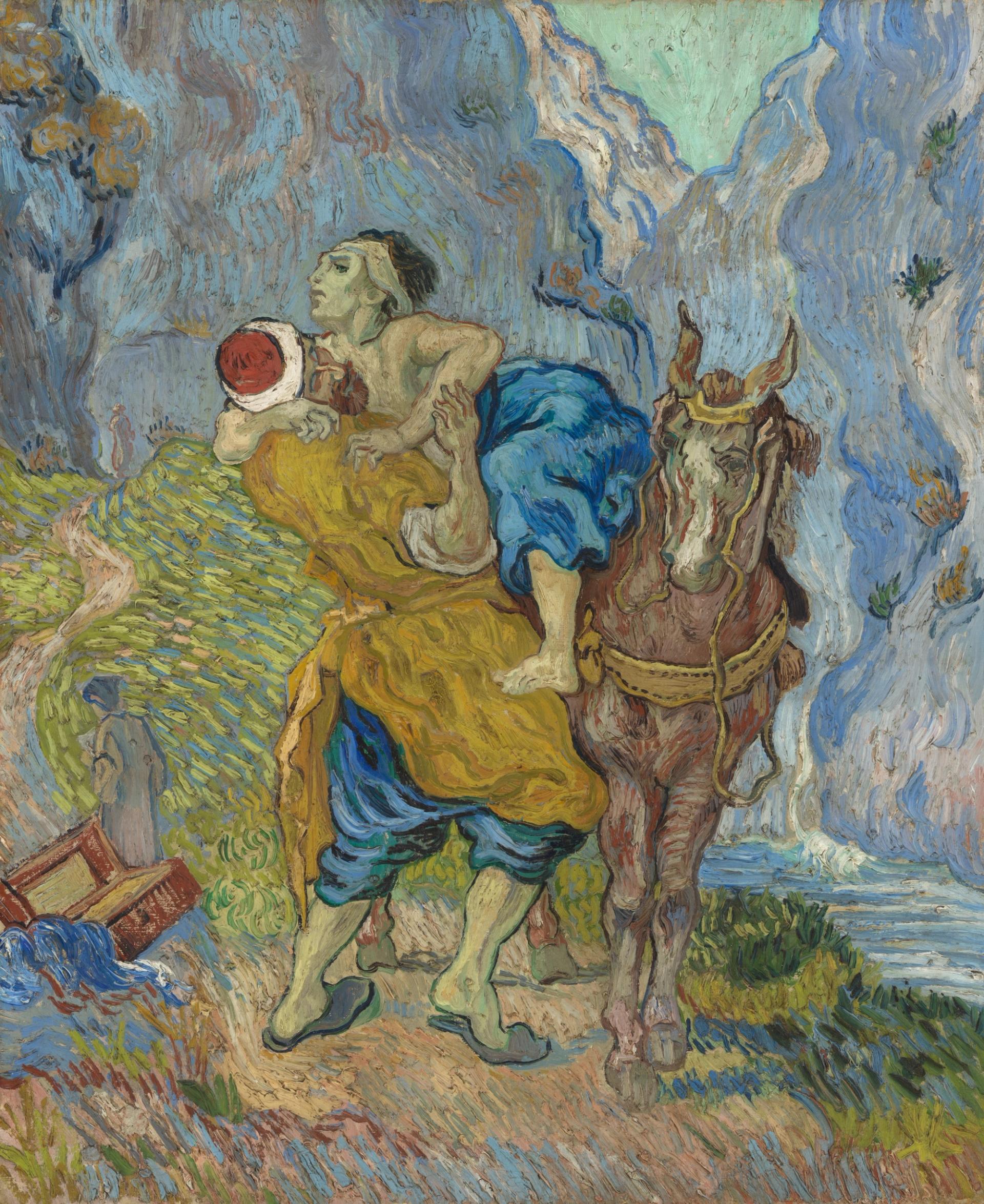
Van Gogh’s The Good Samaritan (after Eugène Delacroix) (May 1890) Credit: Kröller-Müller Museum, Otterlo
Van Gogh made a coloured copy of Eugène Delacroix’s print of The Good Samaritan (May 1890) just before he left the asylum. Gretor’s life remains shrouded in mystery, but he sold his six Van Goghs in the 1890s or very early 1900s.
Early sales to today’s mega-prices
All the 11 Van Gogh paintings sold in 1891 were marketed on Bonger’s behalf by Tanguy, at prices of roughly 400 francs each (then £16, but with inflation equivalent to around £1,400 today).
Not surprisingly, they include some of what we now regard as Van Gogh’s finest landscapes and flower still lifes, although the presence of the three works inspired by black-and-white prints by Millet, Doré and Delacroix may come as a surprise.
Following these 1891 sales, a trickle more continued over the next three years. But Van Gogh’s eventual commercial success began in 1895, when the Parisian dealer Ambroise Vollard recognised his importance and started to stage a series of exhibitions—eventually selling around 30 paintings in the next five years.
Now, of course, Van Gogh is one of the world’s best-selling artists. In recent years 11 of his paintings have sold for more than $40m.



